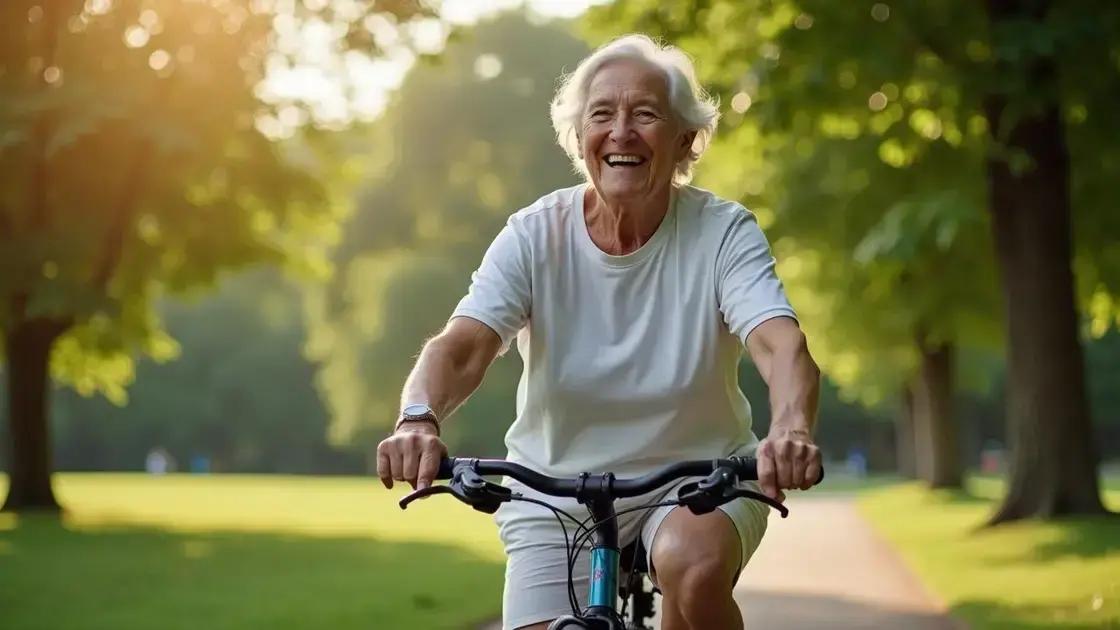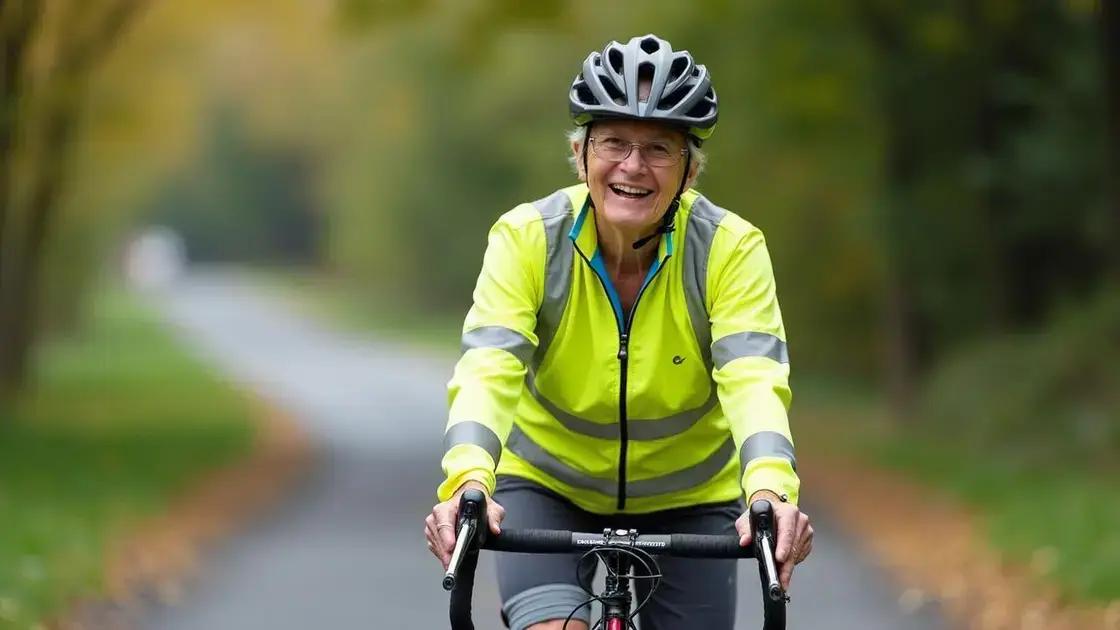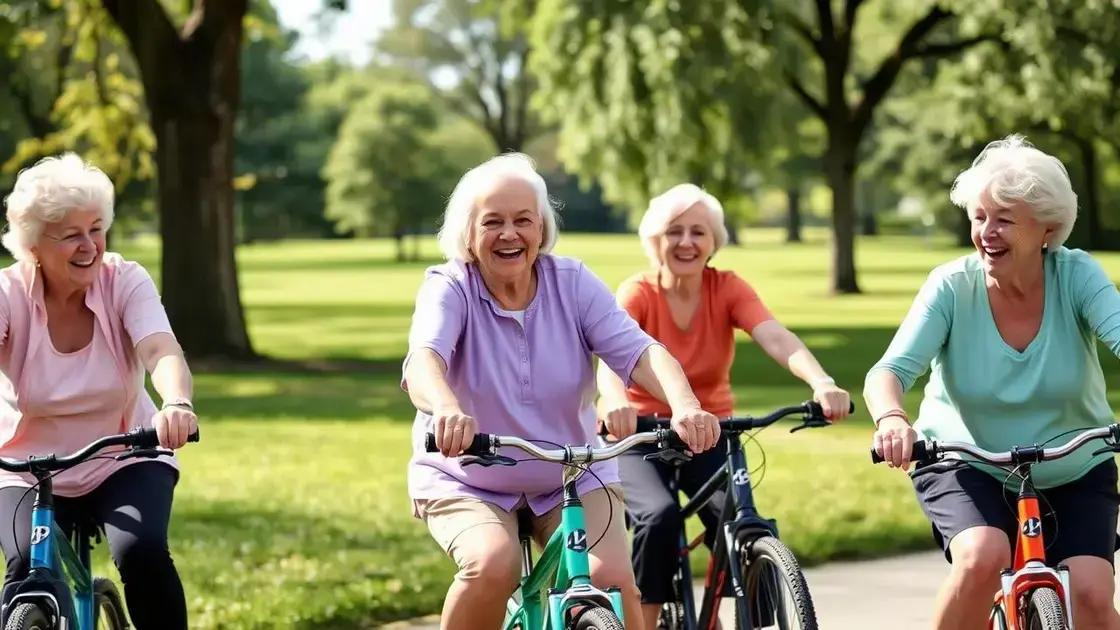Discover how to get started with cycling after 50 by understanding its numerous health benefits, choosing the right bike, prioritizing safety, and joining a cycling community to enhance your riding experience.
Are you over 50 and looking for a new, fulfilling activity? Cycling can be a fantastic way to stay fit, enjoy the outdoors, and meet new friends. This article will guide you through how to get started with cycling after 50, covering everything from selecting the right bike to safety tips tailored for seniors. Whether you’re a complete beginner or revisiting a childhood hobby, cycling offers numerous benefits and an opportunity to enhance your lifestyle.
Benefits of Cycling for Seniors

Cycling is a great form of exercise for seniors that offers numerous physical and mental benefits. As we age, staying active is essential to maintaining both our health and happiness. Here are some key benefits to consider:
Improved Cardiovascular Health
Cycling gets your heart pumping and improves circulation. This helps reduce the risk of heart disease and enhances overall cardiovascular health.
Strengthens Muscles and Joints
Unlike high-impact exercises, cycling is gentle on your joints. It builds strength in your legs and improves endurance without putting much stress on your body.
Mental Well-being
Cycling can boost your mood and reduce feelings of anxiety and depression. The combination of exercise and being outdoors can do wonders for your mental health.
Weight Management
Frequent cycling helps burn calories, making it easier to manage your weight. This can lead to increased energy levels and a more active lifestyle.
Social Interaction
Cycling often leads to opportunities to meet new people. Joining a local cycling group can enhance your social life, providing motivation and companionship on your rides.
Enhances Balance and Coordination
Cycling helps improve balance and coordination, reducing the risk of falls—a common concern for older adults.
Overall, cycling can significantly enhance quality of life for seniors by promoting physical health, social interaction, and mental well-being. It’s a fun and effective way to stay fit as you transition into this new chapter of life.
Choosing the Right Bike

Choosing the right bike is crucial for a positive cycling experience, especially for those over 50. With so many options available, it is important to find a bike that suits your needs and comfort level. Here are some tips to help you make the right choice:
Types of Bikes
There are several types of bikes to consider:
- Road Bikes: These bikes are lightweight and designed for speed on paved surfaces. They have thin tires and a dropped handlebar.
- Hybrid Bikes: Hybrid bikes combine features from road and mountain bikes, making them versatile for various terrains. They are comfortable for leisurely rides.
- Comfort Bikes: As the name suggests, comfort bikes prioritize a relaxed riding experience. They have wider seats, upright handlebars, and are easy to ride.
- Electric Bikes: For those who want a little boost, electric bikes offer pedal-assist options. They make cycling easier, especially on hills.
Finding the Right Fit
Getting the right size bike is essential for comfort and safety. Here are some tips:
- Stand over the bike frame; you should have at least an inch of clearance for road bikes and about 2 inches for mountain bikes.
- Adjust the seat height so that your legs can fully extend at the bottom of the pedal stroke.
- Hold the handlebars comfortably without stretching too much, ensuring a natural riding posture.
Testing the Bike
Before purchasing a bike, it’s important to test it out:
- Take a short ride to feel how the bike handles.
- Check the brakes to ensure they are responsive.
- Make sure the gears shift smoothly.
Trying different bikes will help you find the one that feels best for you.
Accessories to Consider
When choosing a bike, think about accessories that enhance your riding experience:
- Helmet: Safety should always come first. A good helmet protects your head in case of a fall.
- Lights and Reflectors: If cycling in low light, lights and reflectors increase your visibility on the road.
- Comfortable Seat: Consider swapping the original seat for one that provides better cushioning.
By taking the time to choose the right bike, you can ensure a comfortable and enjoyable cycling experience as you start your journey.
Safety Tips for Cycling After 50

Safety should be a top priority when cycling, especially for those over 50. Here are some essential safety tips to keep in mind:
Wear a Helmet
Always wear a properly fitted helmet when riding your bike. A helmet can significantly reduce the risk of head injuries in case of an accident.
Choose Safe Routes
Plan your rides on bike paths or lanes, which are safer than riding on busy streets. Look for routes with less traffic to avoid potential hazards.
Be Visible
Wearing bright or reflective clothing helps increase your visibility to drivers. Adding lights and reflectors to your bike is also essential, especially for early morning or evening rides.
Maintain Your Bike
Regularly check your bike to ensure it is safe to ride:
- Brakes: Make sure they are working properly.
- Lights: Confirm that front and rear lights are functioning.
- Tires: Check that they are adequately inflated and in good condition.
Follow Traffic Rules
Always obey traffic signals and signs. Ride in the same direction as traffic, and use hand signals to communicate your intentions to others.
Stay Alert
Pay attention to your surroundings. Avoid distractions, such as using your phone while cycling, to minimize the risk of accidents.
Ride with a Partner
Cycling with a friend or a group can enhance your safety. If someone else is with you, they can help in case of an emergency.
Know Your Limits
Listen to your body and know when to stop. If you feel tired or unwell, it’s better to take a break than to push yourself too hard.
By following these safety tips, you can enjoy cycling while minimizing risks and ensuring a more secure experience.
Getting Involved in a Cycling Community

Getting involved in a cycling community can enhance your cycling experience and bring new friendships into your life. Here are some ways to connect and engage with fellow cyclists:
Join Local Cycling Clubs
Look for local cycling clubs or groups in your area. These organizations often host regular rides, events, and social gatherings. Joining a club provides a structured way to meet other riders and discover new routes.
Participate in Organized Rides
Many communities host organized cycling events or charity rides. Participating in these events is a great way to challenge yourself while meeting new people who share your interests.
Attend Cycling Workshops
Look for workshops or seminars that focus on cycling skills, safety, and maintenance. These sessions often attract cyclists of all levels and offer plenty of opportunities to network.
Utilize Social Media and Online Forums
Join cycling groups on social media platforms or forums dedicated to cycling. Online communities can provide support, advice, and information about local events.
Encourage Friends to Join
If you have friends or family who enjoy cycling, encourage them to ride with you. Building a small group can enhance your social experience while providing motivation and companionship on rides.
Volunteer for Cycling Events
Consider volunteering for local cycling events. This allows you to meet other cycling enthusiasts and gain insight into the cycling community while giving back.
Follow Cycling Organizations
Stay informed about local cycling news by following local cycling organizations. Subscribing to newsletters or following social media accounts can keep you updated on community events and rides.
Being involved in a cycling community enriches your experience and helps foster new relationships. These interactions can make cycling more enjoyable and fulfilling as you explore the open road.
Embrace Cycling at Any Age
Cycling is a fantastic way to stay active, make new friends, and enjoy the great outdoors, especially for those over 50. By understanding the benefits of cycling, choosing the right bike, prioritizing safety, and getting involved in a cycling community, you set yourself up for an enjoyable and fulfilling experience.
Whether you’re looking to improve your health, explore new places, or simply have fun, cycling offers endless opportunities that can enhance your quality of life. So, gear up, hit the road, and embrace the joy of cycling at any age!
FAQ – Common Questions About Cycling After 50
Is cycling safe for people over 50?
Yes, cycling is safe for people over 50 if proper precautions are taken. Following safety tips, wearing a helmet, and choosing the right bike will enhance your cycling experience.
What type of bike should I choose?
Selecting a bike depends on your comfort and riding style. Consider road bikes for speed, hybrid bikes for versatility, and comfort bikes for a relaxed ride.
How do I find a cycling community near me?
You can join local cycling clubs, participate in organized rides, or use social media and online forums to connect with fellow cyclists.
What are the health benefits of cycling for seniors?
Cycling improves cardiovascular health, strengthens muscles, enhances mental well-being, aids in weight management, and promotes social interaction.
How often should I cycle after 50?
Aim for at least 150 minutes of moderate cycling per week. Listen to your body and adjust your routine to match your fitness level.
Can I participate in cycling events as a beginner?
Absolutely! Most cycling events have groups for all skill levels. Start with beginner-friendly rides to build your confidence.












